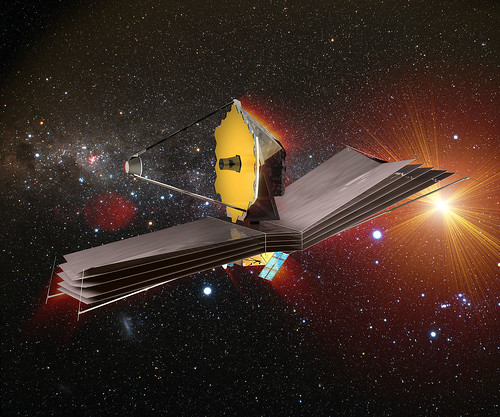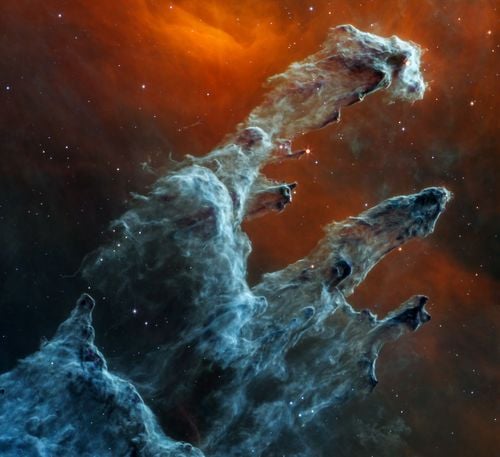
The telescope has already managed to unfurl its heat shield and secondary mirror. It marks the final stage of the telescope's major structural deployments as it speeds through space toward its desired orbit around the sun. The James Webb Space Telescope is progressing to the next stage of its deployment today by spreading its primary mirror "wings," NASA said in a blog post on Friday. The live feed is due to start at 4:30 p.m. The Virtual Telescope Project is also due to host live footage of Webb moving across the sky as seen from Earth later today on its website's WebTV page. In a post on the Virtual Telescope Project's website, Masi said Webb is still easy to spot using his ground-based instruments due to its recently deployed sunshield, which has made it much brighter. Its progress through space can be followed via an online tracker. Webb was just under 1 million kilometers (621,000 miles) away from Earth at the time the image was taken. The telescope is currently traveling away from Earth on its way to its desired orbit around the sun.


“After looking at these particular findings, I think our fellow researchers are going to be thinking of innovative ways to work with these dusty supernovae in the future.The James Webb Space Telescope, marked by a white arrow, pictured from Earth in Italy on January 6, 2022. “There’s a growing excitement to understand what this dust also implies about the core of the star that exploded,” said Space Telescope Science Institute program chief Ori Fox. SN 2004et alone may have spewed out as much dust as 5,000 times the mass of the Earth.The findings also highlight the potential of the Webb telescope to detect similar space dust clouds from supernovae in other galaxies. Ten have been observed over the past 100 years, compared to just one in the same time period in our own Milky Way galaxy, which has twice as many stars.The two stars that exploded in those events were an estimated 15 times more massive than our sun.

"SN 1987A offers one of the most promising examples of significant SN dust formation, but until the, instruments have traditionally lacked the sensitivity at both late times and longer wavelengths to detect analogous dust reservoirs."NGC 6946 is known as the "fireworks galaxy" for its phenomenally high rate of supernovae. New images from the James Webb Space Telescope have backed a theory that ancient supernovae sowed young galaxies with the seeds of planet birth billions of years ago.A new study published in the British Royal Astronomical Society's monthly journal found large amounts of 'space dust' from two supernova explosions in a distant galaxy photographed by the powerful orbital observatory.The findings back a theory that space dust, thought to be the origin of planets like our own, has its origins in the death throes of huge stars with a mass at least nine times that of our sun.The supernovae, designated SN 2004et and SN 2017eaw, were found in the spiral galaxy NGC 6946 which lies 22 million light years from our solar system.The telescope's infra-red camera made it possible to study their remains, which were not readily detectable in the visible light spectrum as the ejected cloud of dust cools rapidly as it expands."Supernova explosions have been sought for decades as a possible source of dust in the universe, providing the seeds of galaxies, stars, and planetary systems," the study read.


 0 kommentar(er)
0 kommentar(er)
